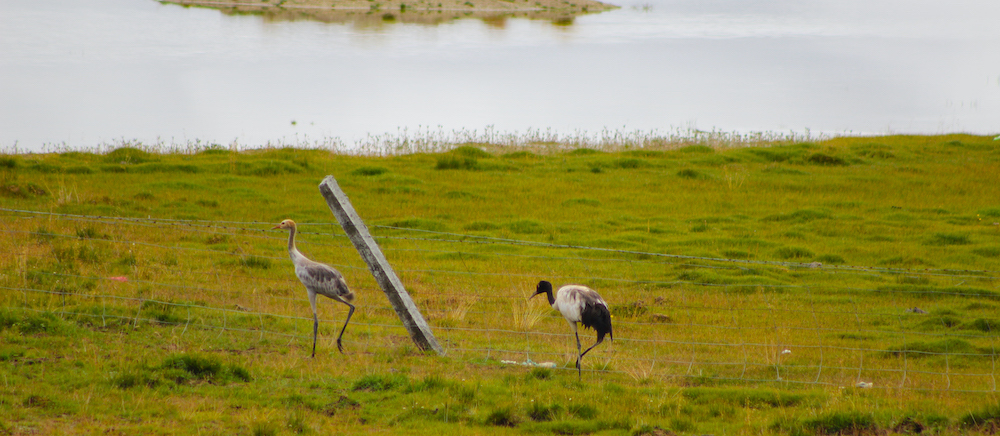+86-15889090408
[email protected]
The Golok Tibetan Autonomous Prefecture is located in Qinghai Province of China. It is in the Amdo region of Tibet. It has over 200,000 with a population density of around 2 inhabitants per kilometer square, and 91 percent is Tibetan. The most of Tibetan population are nomadic, with many livestock like yaks, sheep, and horses. The Golok Tibetan autonomous prefecture consists of six counties: Machen, Mato, Padma, Jigdril, Gade, and Darlag. The Golok city is located around 450km south of Xining, the capital of Qinghai province. Most of the counties are situated at an altitude of 3500 m above sea level.

The Machen county is under the administration of Golok Tibetan Autonomous Prefecture, and it is situated at an average altitude of 3700 m above sea level. It has two towns and six townships, which are Dawu town and Lajia town. Machen county is one of the famous counties under Golok Tibetan Autonomous Prefecture. One of the famous holy mountains is situated in Machen county, mount Amnye Machen snow mountain. It is located 50km southwest of Dawu town and 15km from Xiadawu township of Machen county. Amnye Machen is one of the four main holy mountains of Tibet along with Mt.Kailash, Mt. Minyak Gongga and Mt.Karwa Karpo. It attracts Tibetan pilgrims from across eastern and northern Tibet during the summer months. Especially, the year of sheep in the Tibetan calendar, nomads people from Amdo flows here with their families.

The Padma County is located in Qinghai Province under the administration of Golok Tibetan Autonomous Prefecture. It is one of the famous places to witness its folk art troupe. As the warm season of spring is just around the corner, performers consist of local herders, and students make the best use of time to rehearse. The folk art troupe annually stages more than 20 times performances to popularize national culture and enrich people’s cultural life, which is highly commended by the central and local government and loved by the locals.
In recent years, the folk art troupe from Banma County has presented hundreds of shows over the Golok Tibetan Autonomous Prefecture and attracted over 300 thousand audiences. It has become an active amateur art troupe on the plateau that has promoted cultural and ideological progress by putting on performances for farmers and herders. The art troupe is well-known among Golok Prefecture. It’s a pleasure for young people there to take part in the art troupe. At present, the art troupe has already trained more than 60 performers, including local cadres, students, residents, monks, etc. They mainly give on traditional theatrical pieces like King Gesar, Princess Wencheng, Songtsen Gampo, and so forth.

It is located in the southeast central Qinghai Province. It is the highest county in China, with an average elevation of 4300 m above sea level. The upper stream of the yellow river flows to Ngoring and Gyaring lake of Madoi county. Many tourists visit these two lakes. Madoi County has a large population of wildlife animals such as wild horses, also known as Kiang in Tibetan, Tibetan gazelles, bharals or wild sheep, wolves, and foxes. It is an important place to study geographic science, ecological and environmental science, and Chinese university students come for research.

It is a small county located in southeastern Qinghai province under the administration of Golok Tibetan Autonomous Prefecture. It is situated at the Sichuan- Qinghai border. The average elevation of the county is about 3500 m above sea level. It has a very long and cold winter, but the summer season is cool, short, and rainy.

It is located in the southwest of Qinghai province under the administration of Golok Tibetan Autonomous Prefecture. It has one town and five townships. The seat of Jigral county is in the town of Chugqensumdo and was originally known as Kangsar in Tibetan. It has a nature reserve at the border of Qinghai, Gansu, and Sichuan. It is the one best place for wildlife photographers. Many wildlife animals such as white-lipped deer, blue sheep, snow leopards, chiru or Tibetan antelopes, and wild horses. It also has varieties of plants, and you will witness plants that you had never seen before. Jigzhi county is quite near to Baiyu county of Garze Tibetan Autonomous Prefecture, Sichuan Province. The Chugqensumdo town is the best place for trekking and hiking in Jigzhi county. The best time to visit Chugqensumdo nature reserve is from March to April and the month of October.
